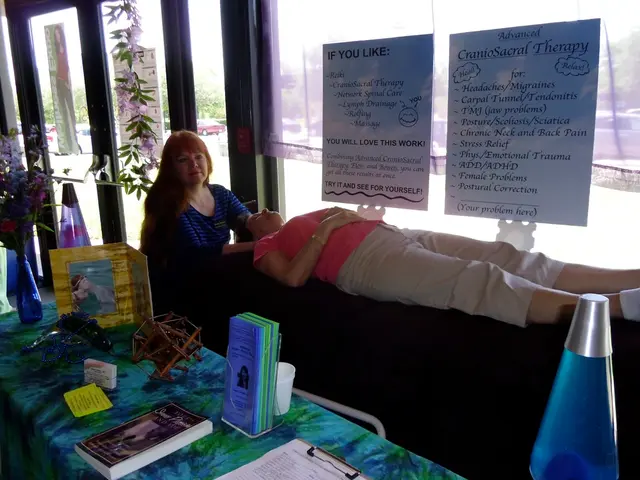Correct posture and alleviate upper back discomfort with these three exercises from a personal mobility coach
In a recent video, certified mobility coach Anthony Green has shared three exercises designed to strengthen and mobilize the upper back, addressing a common issue among sedentary office workers and regular exercisers alike. These exercises, which do not require any equipment, can be used as a standalone circuit to alleviate upper-back soreness or to mobilize and activate the upper back and shoulders before an upper-body workout.
The first exercise is the prone snow angel. To perform this movement, lie face down, extend arms out to the sides, rotate palms to face down, bend elbows to bring hands to meet behind the head, and reverse the movement to the starting position. This exercise mobilizes the shoulders through their full range of motion.
The second exercise is the prone overhead reach. To perform this exercise, lie face down with palms on the floor either side of the chest, lift one hand off the floor, reach forward and to the opposite side of the body, and repeat on the other side. This movement creates space around the thoracic spine and through the shoulder joint.
The third exercise is the prone rotation. To perform this exercise, lie face down, lift one elbow, rotate and arch the upper back to lift it as high as possible, and repeat on the other side. This exercise unilaterally mobilizes and activates the thoracic spine.
For those looking for more exercises to strengthen and mobilize the upper back, there are various resources available. Following mobility and strength coaches on platforms like Instagram and TikTok can provide access to routines focused specifically on upper back mobility and strength. These platforms often feature complementary movements such as rotary rows, standing shoulder presses, chest stretches with a stick, and deep back bends that open and strengthen the upper back and shoulders.
Functional training websites and blogs may also offer exercises like med ball floor stomps, heavy kettlebell swings, sprint step-ups, and explosive push-ups as part of upper-lower body combos for overall mobility and strength balance.
Consulting posts by chiropractors or physical therapists who recommend exercises according to pain location and muscle groups involved in upper back dysfunction can also be beneficial. These professionals often focus on both strengthening and relieving tension through targeted movements.
For a more curated program, blending mobility drills (like thoracic rotations, scapular retractions, chest openers) with strength exercises emphasizing the upper back muscles (rhomboids, traps, rear delts) using light weights, resistance bands, or bodyweight is recommended. Start with short sessions (e.g., 3–5 reps or sets, under 15 minutes) focusing on quality and controlled movement, as advised by expert coaches to avoid overtraining.
By incorporating these exercises into your routine, you may experience improvements in shoulder and thoracic spine mobility, which can enhance posture and reduce back pain. For direct exercise demonstrations, follow Anthony Green's official social media accounts. His videos often feature bodyweight and band-resisted movements with cues to improve posture and increase the thoracic spine’s range of motion. These exercises are practical for practice at home or in the gym.
Last month, Green released a video addressing upper back pain and stiffness, featuring three bodyweight exercises to strengthen and mobilize the upper back. These exercises, like the ones mentioned above, help strengthen the upper back and improve shoulder and thoracic spine mobility.
In conclusion, following Anthony Green's official social media for direct exercise demonstrations and complementing those with upper back mobility and strengthening programs shared by other mobility coaches and rehab professionals is an effective approach to addressing upper-back pain and improving mobility.
Incorporating yoga routines that emphasize flexibility in the upper back, such as those focused on thoracic rotations and scapular retractions, can complement the mobility exercises suggested by Anthony Green for a well-rounded health-and-wellness routine. Furthermore, research in the field of science indicates that regular yoga practice not only strengthens the upper back but also improves overall fitness-and-exercise performance, making it an essential component of a comprehensive health regimen.




